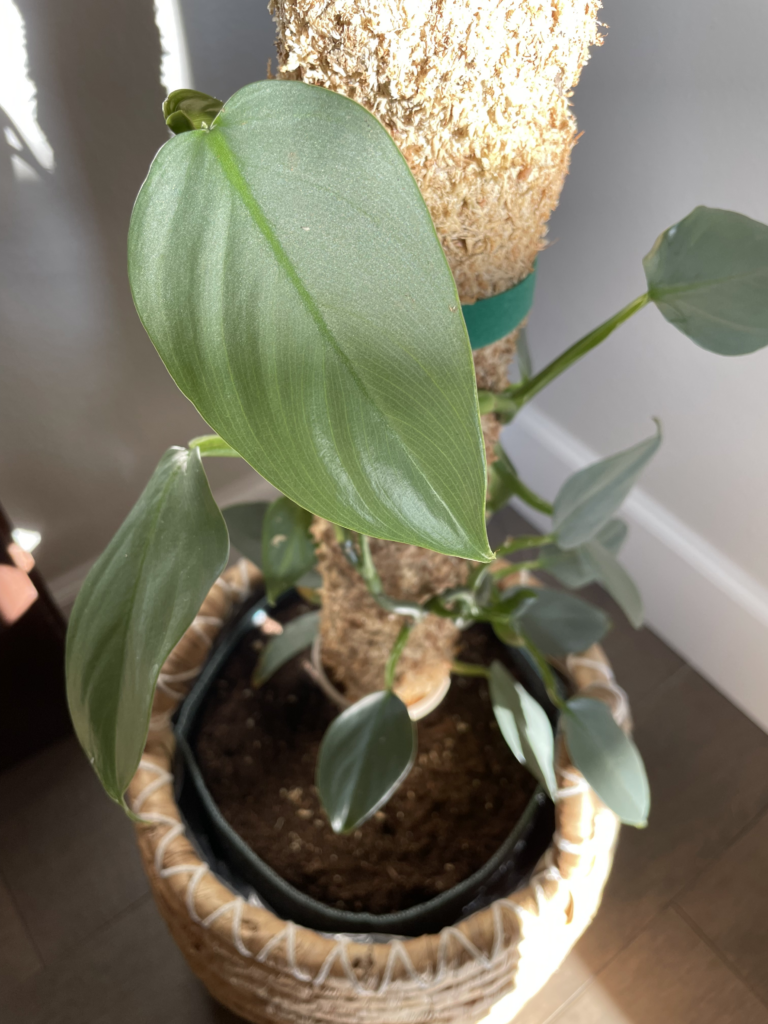To moss pole or not to moss pole?
Ever since acquiring a silver sword philodendron (Philodendron hastatum ‘Silver Sword’), I’ve debated whether I should give it a support to grow on. I was able to put off the question at first, because I bought mine as a small 4″ starter plant that was able to stand on its own. After a year, however, it had grown from about 4″ tall to around 18″ long and was flopping and trailing out of its pot.
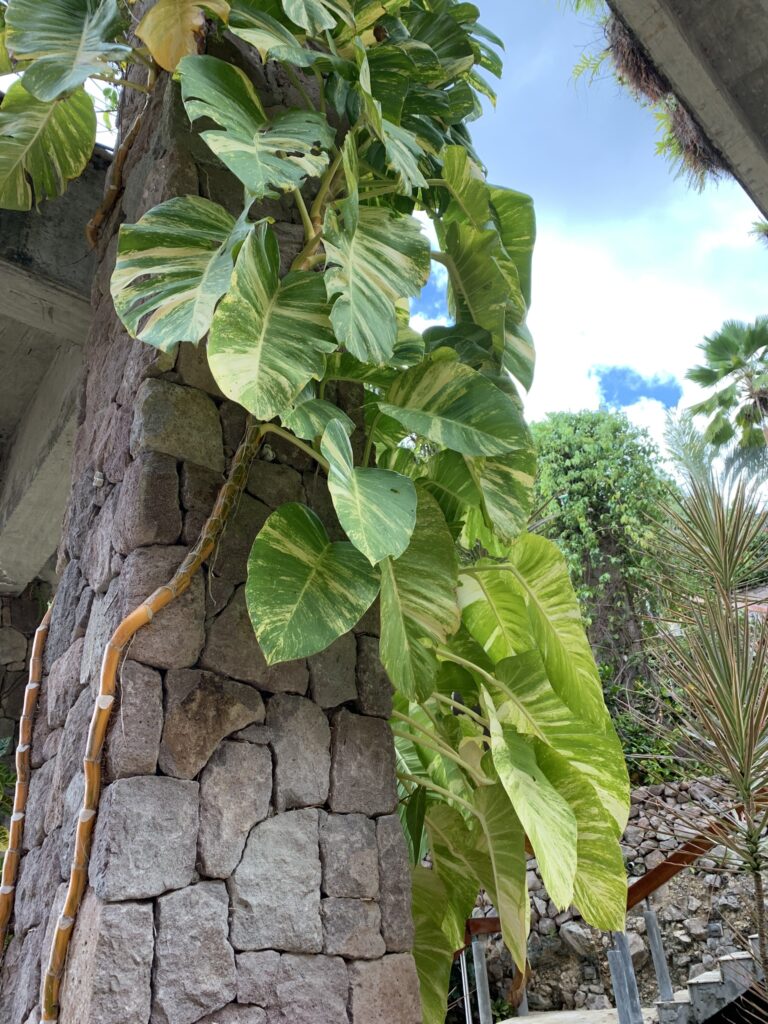
The trailing look can be really romantic and beautiful, but I learned several years ago that climbing allows some plants (like pothos and philodendron) to grow larger, differently-shaped, mature leaves. We had been on vacation in Saint Lucia when I spotted a beautiful climbing plant with huge, green and gold fenestrated leaves. I used iNaturalist to identify what kind of plant it was, and to my surprise, it was a golden pothos!
The pothos plants we normally see as houseplants usually feature trailing vines with cute small leaves, so it was a huge revelation for me to realize they can look like this, too!
While I’ve seen pictures of mature silver swords with big, lance-shaped leaves, mine has stayed in its juvenile stage so far because it has had nothing to climb on. I’m super curious how it will change when it grows on a moss pole! My husband and I joke that it’s like evolving a Pokémon. 😂
To moss pole or not to moss pole?
I’ve never grown anything on a moss pole before, so I had a lot of questions before jumping in:
- How hard is it to keep them watered?
- Will they grow mold or algae?
- Are they eco-friendly?
- What are moss pole alternatives?
As always, I started out with some internet research. Here’s what I found on the latter two questions – check out the bottom of this post for my experience so far answering the other questions!
Are moss poles eco-friendly?
This is a tricky one! Caring for the environment is very important to me, so naturally, I wanted to ensure as much as possible that my chosen plant stabilizing solution would be sustainable. There isn’t a super clear answer to this one. It boils down to whether the spaghnum moss used for the pole is sustainably sourced. (This Is Peat Sustainable? article goes into some detail on sustainable peat moss harvesting.)
What are moss pole alternatives?
Here are a few popular alternatives I’ve found for supporting houseplants:
| Alternative | Comparison to Moss Pole |
|---|---|
| Trellis | No medium for plants to root into Doesn’t contribute humidity No need to water or maintain growing medium Can be less visually imposing Lots of color, material, design options |
| Coco coir pole | Holds more water but but dries out faster Generally considered more sustainable as a coconut by-product – but it’s complicated Less variety of options (that I’ve found) Medium to dark brown color (vs. spaghnum moss is more yellow) |
| Wooden plank | Tricky to extend height Will eventually rot, can grow mildew if it stays wet No need to water or maintain growing medium (but you can spray it for moisture) More closely mimics surface most aroids would naturally grow on |
There are also lots of different options within the world of moss poles, including bendable moss poles, moss-stuffed trellis poles, and stakes vs. poles with a base.
The Trofolia Straight-Up Robust Moss Pole
After all my research, I chose to buy a 36″ tall Trofolia Straight-Up Robust Moss Pole with a 5″ base. It’s pricier than some other options out there, but it’s high quality and thoughtfully designed with lots of great features. Plus, I love supporting small family-run businesses!
I plan to try moss alternatives in the future, but I figured I should start my houseplant-support journey with the tried-and-true standard.
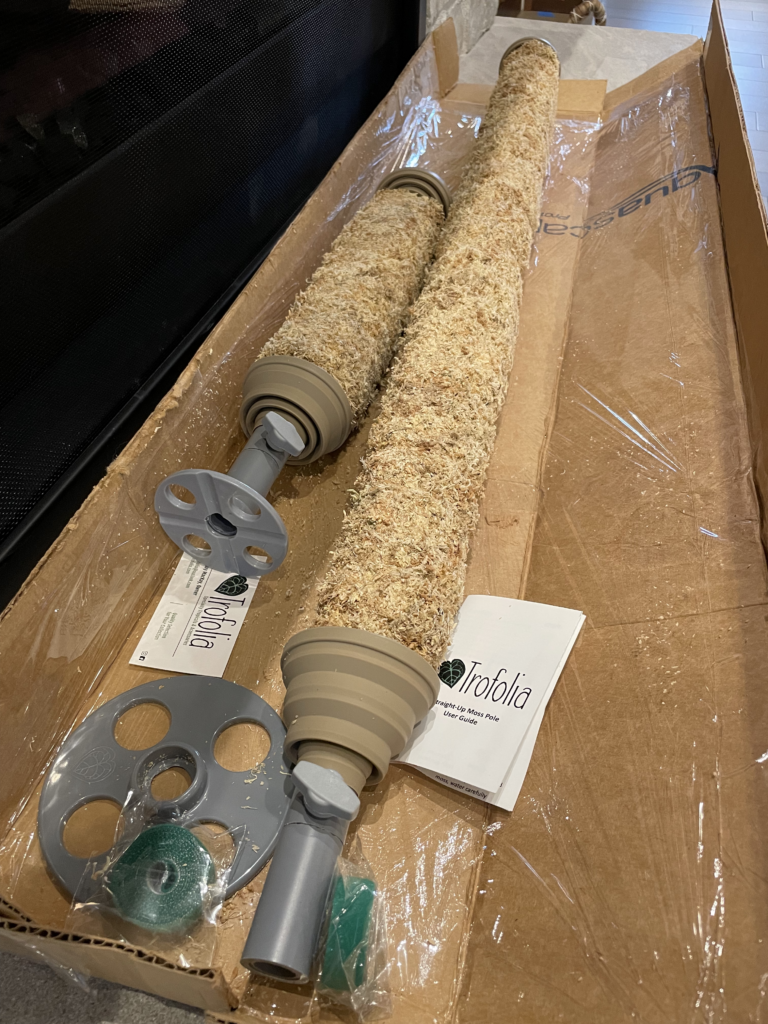
My moss pole (along with another smaller one I got for future use – I’ve got a few plants that could probably use one!) arrived well packaged in a long box lined with plastic. The moss was still a bit damp, which I appreciated because dry moss sheds everywhere when handled.
The poles also came with a helpful instruction guide, and a couple of small packages of Velcro tape for securing plants to the poles.
Check out the bottom of this post for more learnings from my experience growing with this moss pole!
Repotting my philodendron
I decided to repot my philodendron from its plastic nursery pot into a fabric pot that would fit into a decorative basket I already had. I love using fabric pots because they are lightweight, breathable, and moldable to fit a decorative container. They also promote better root systems and fold down easily for storage when not in use!
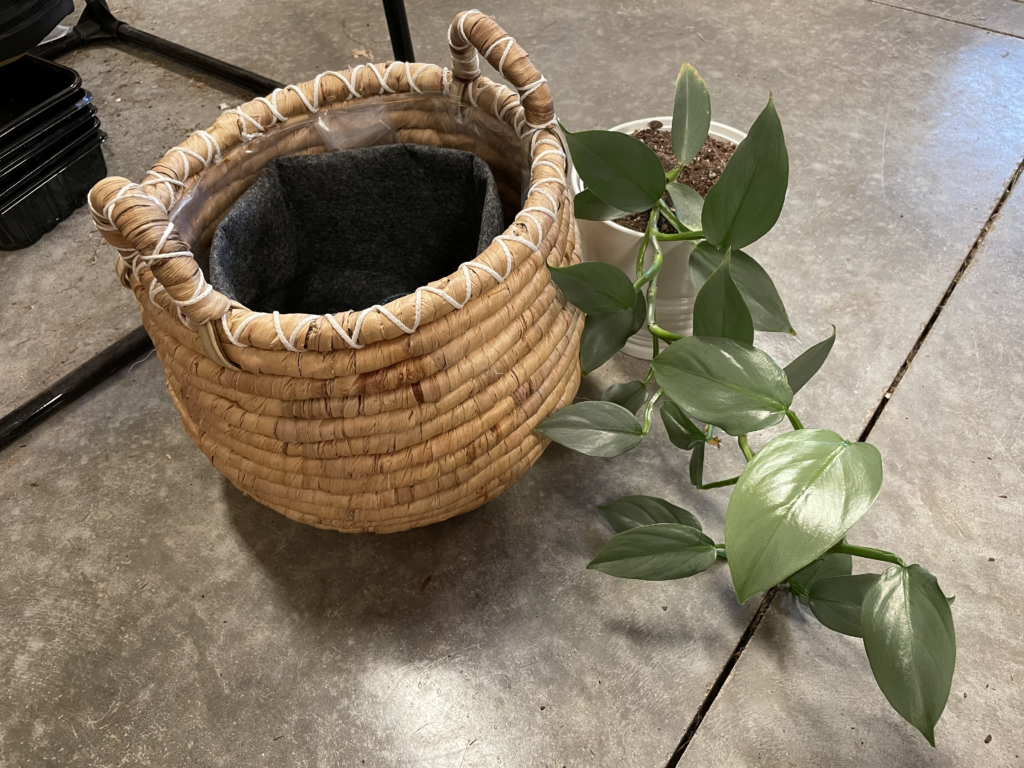
Since my moss poles came with a stabilizing base, the first step was to assemble the pole and adjust the height to fit my pot. The adjustable base was super easy to loosen and tighten with a screw located just below the silicone funnel-reservoir.
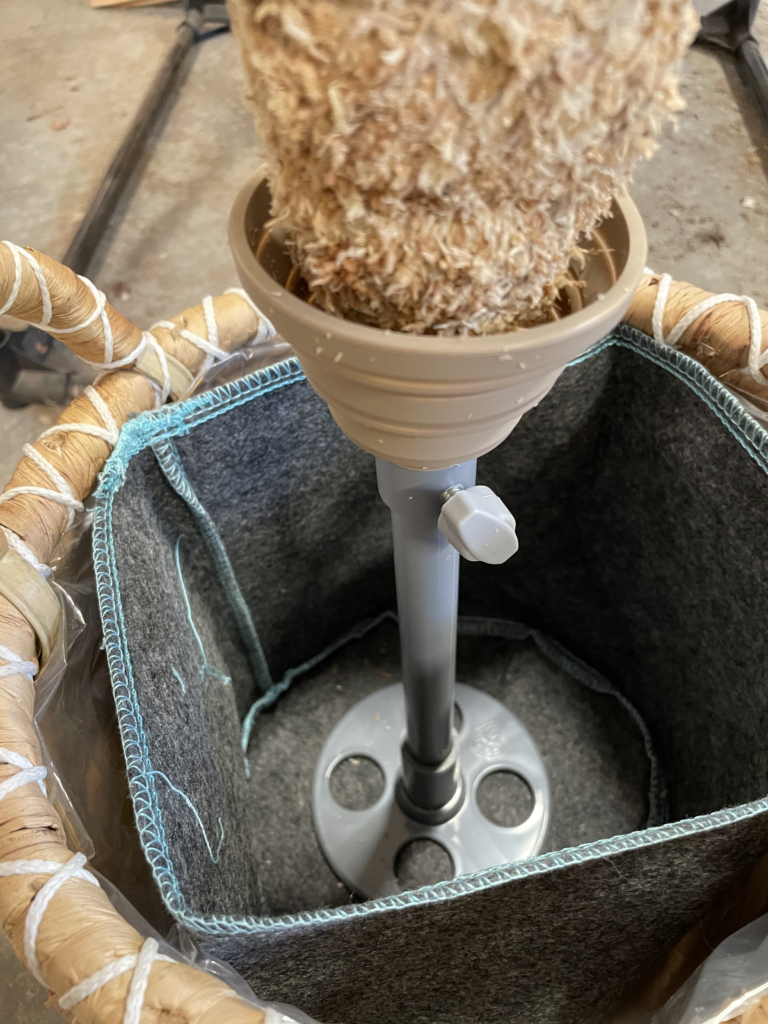
I popped open the reservoir at the bottom before filling the pot with potting mix. I actually wasn’t sure if the soil should go up to the reservoir (covering the bottom of the reservoir and the height adjustment screw), or if I should keep those above soil level. 🤔
There wasn’t any guideline on this in the user guide or on the Trofolia website, so I opted to keep them above soil level just in case I might want to fiddle with them later. However, putting them lower down would probably result in a cleaner look and give the base of the plant more contact with the moss.
Attaching the plant to the moss pole
I chose to wrap my plant in a spiral around the moss pole, vs. straight up along one side. I’m not sure if there’s a “right” way to do it, but figured it would be nice to have leaves on all sides. Plus, the spiral shape allows more plant length to fit on the pole, which means it can grow longer without needing pruning or a pole extension!
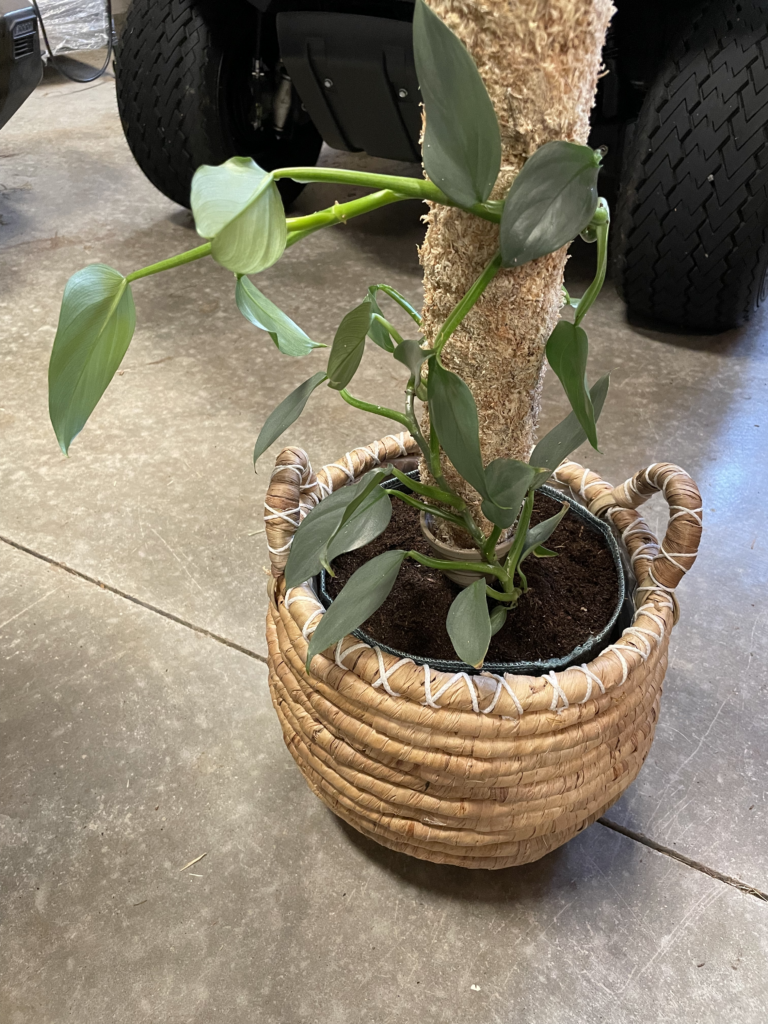
Again, this is my first time doing this, so we’ll see how it goes over time. If you have any tips to share, please let me know!
As my philodendron has continued to grow, I’ve continued gently wrapping the new growth around the moss pole and securing it gently with some Velcro tape until it takes root and can hold on by itself.
What I’ve discovered so far
Here are my learnings over the time I’ve been growing with the Trofolia moss pole, including some answers to the questions at the beginning of this post.
How hard is it to keep the moss pole watered?
The Trofolia moss pole has a handy funnel at the top for watering, which directs water into a pipe at the core of the pole. The water then seeps out into the moss. Watering it is super easy – I just pour water in until the pipe fills up to the top, then allow the water level to drop. (Usually I walk away and do something else, then come back to it later for a refill.) I repeat this process a few times until the moss looks sufficiently watered throughout.
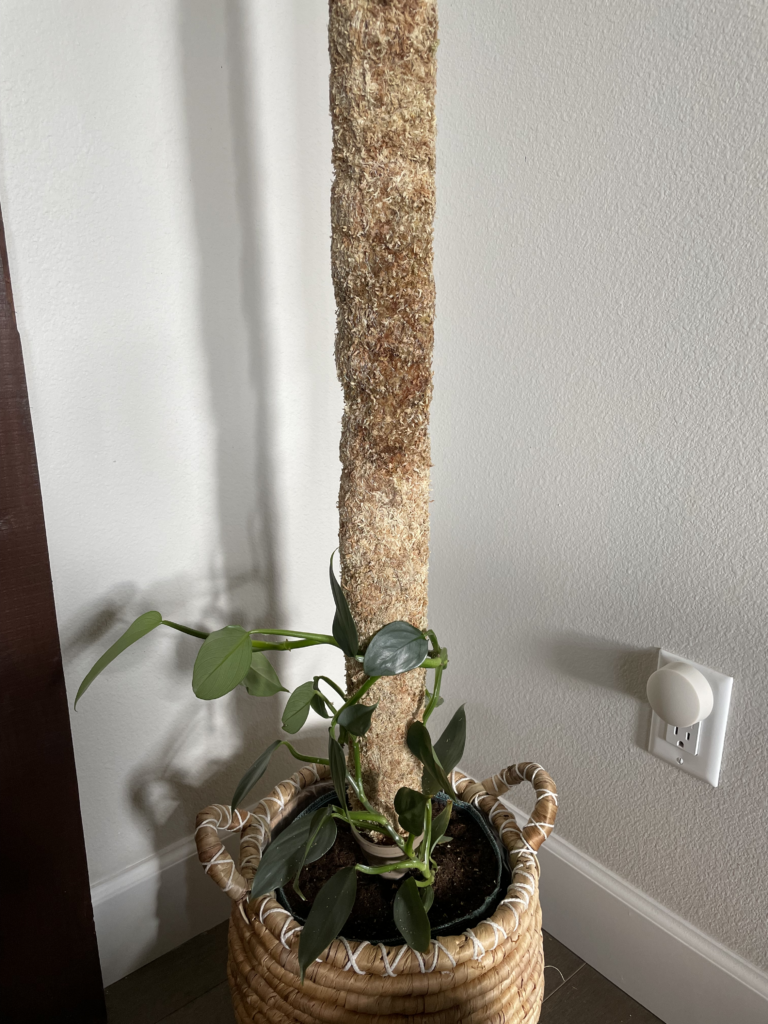
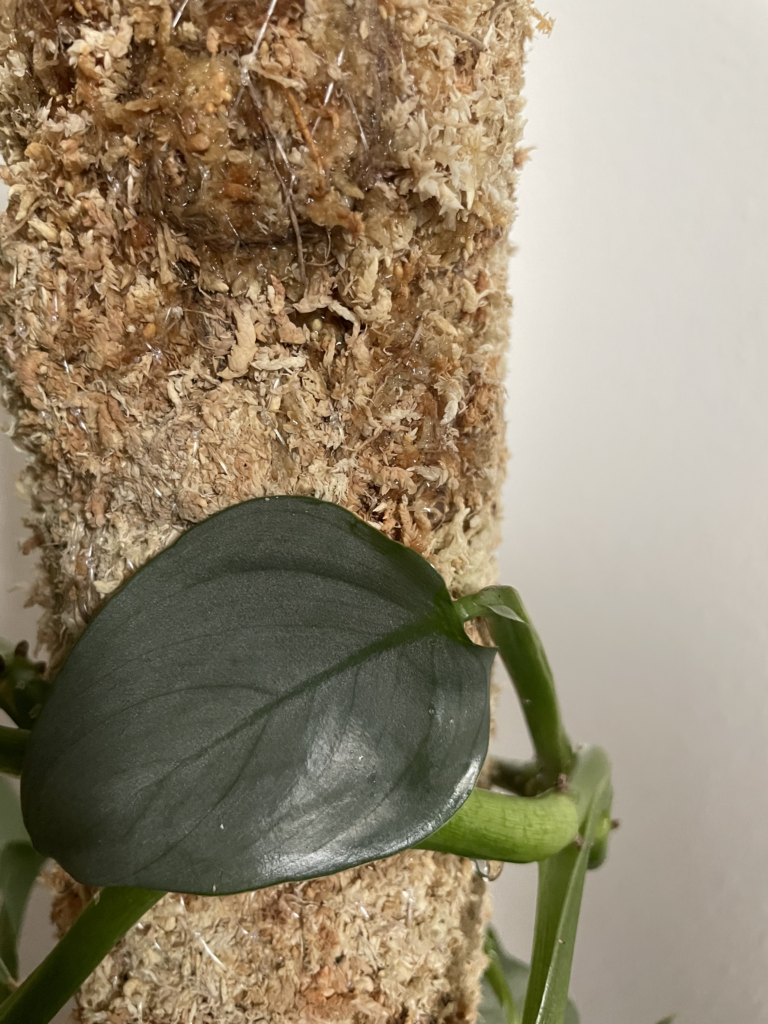
When the moss is dry to the touch, I’m usually able to gradually pour in 2-3 quarts of water before the entire 36″ pole looks damp. Mine tends to look damp toward the middle or top of the pole first, and the bottom seems to get water last.
I think the frequency of watering probably depends on how dry your home environment is. Our home is usually 40-50% humidity, and my moss pole feels dry to the touch after 2-3 days. That being said, my philodendron doesn’t seem to mind it getting dry between waterings – I left home for a week and came home to a completely dry moss pole, and my plant was as happy as ever!
In the cold winter when our home is very dry (~20% humidity or less), the moss pole does dry out very quickly. I have to water it every day for it not to dry out, and I admit, I sometimes forget! My plant has not seemed to mind, though.
Will the moss pole grow mold or algae?
I haven’t seen any mold or algae on my moss pole yet! Given that my moss pole does dry out within 3 days, I doubt that it will grow any. I’ll keep an eye out and update if that changes.
How quickly will the philodendron root onto the pole?
I’ve found that new aerial roots, when secured against the moss pole, root into it within a week. I haven’t noticed any old roots (ones that look hardened / have a brown “crust”) growing into the moss pole, even after being in contact with it for several weeks.
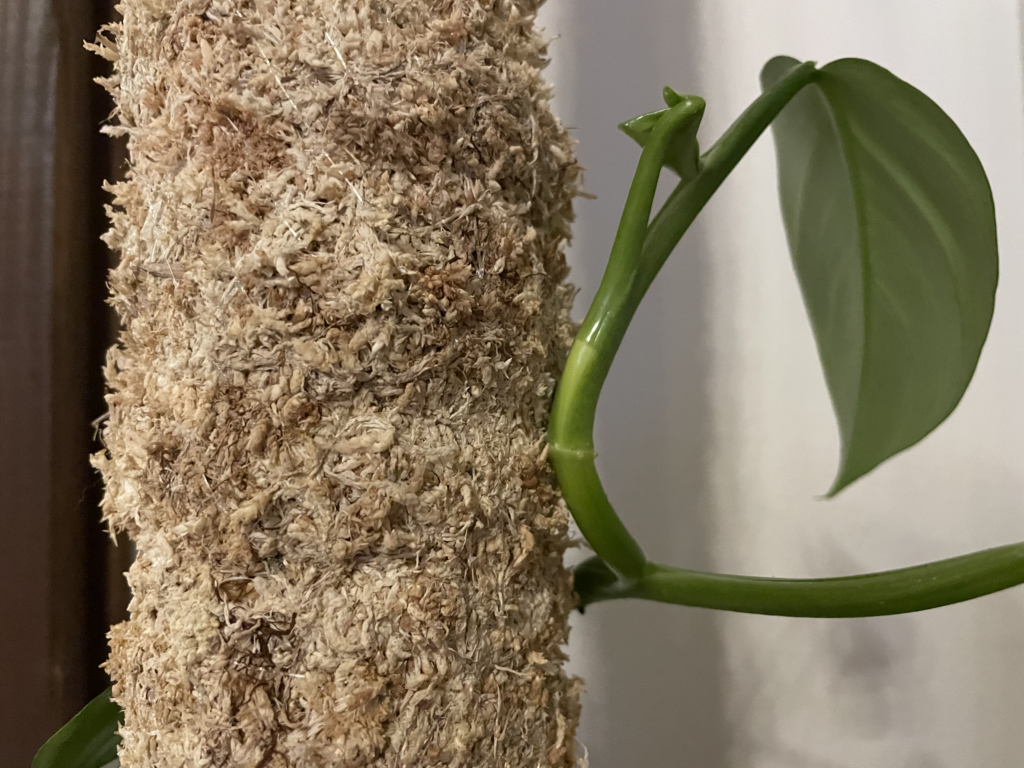
Watch out for moss slumping/shrinkage
After about 6 months of use and weathering a very cold winter that led to very dry indoor air, I have noticed that the moss on the pole has shrunk or slumped to the point where the inner pipe is exposed at the top.
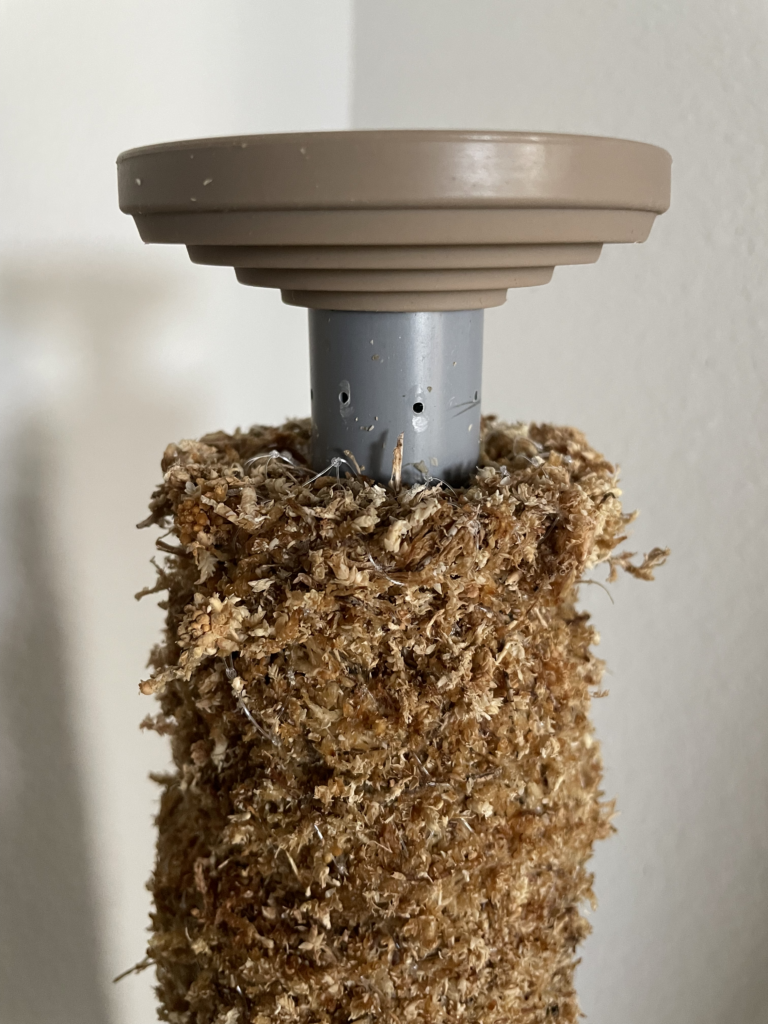
I’ve attempted to pull it back up with lackluster results – it’s not easy to slide the moss! I have learned not to attempt pulling it up when the moss is dry, because bits of moss will crumble off. It’s much more flexible (though squelchy) when the moss is wet, but I still haven’t found a great way to keep it from slumping over time.
I’m curious whether this is an inevitable result of using the Trofolia moss pole, or if it’s due to me intermittently letting the moss get dry. If you have any tips or tricks for this, please let me know!
I look forward to continuing to learn as I get more experience with this moss pole and other types of plant supports. Let me know if you have any tips, techniques, or products you’d recommend I try!
Post Updates
Apr. 15, 2024: Added new observations and learnings I’ve collected over the past 6 months since publishing.

